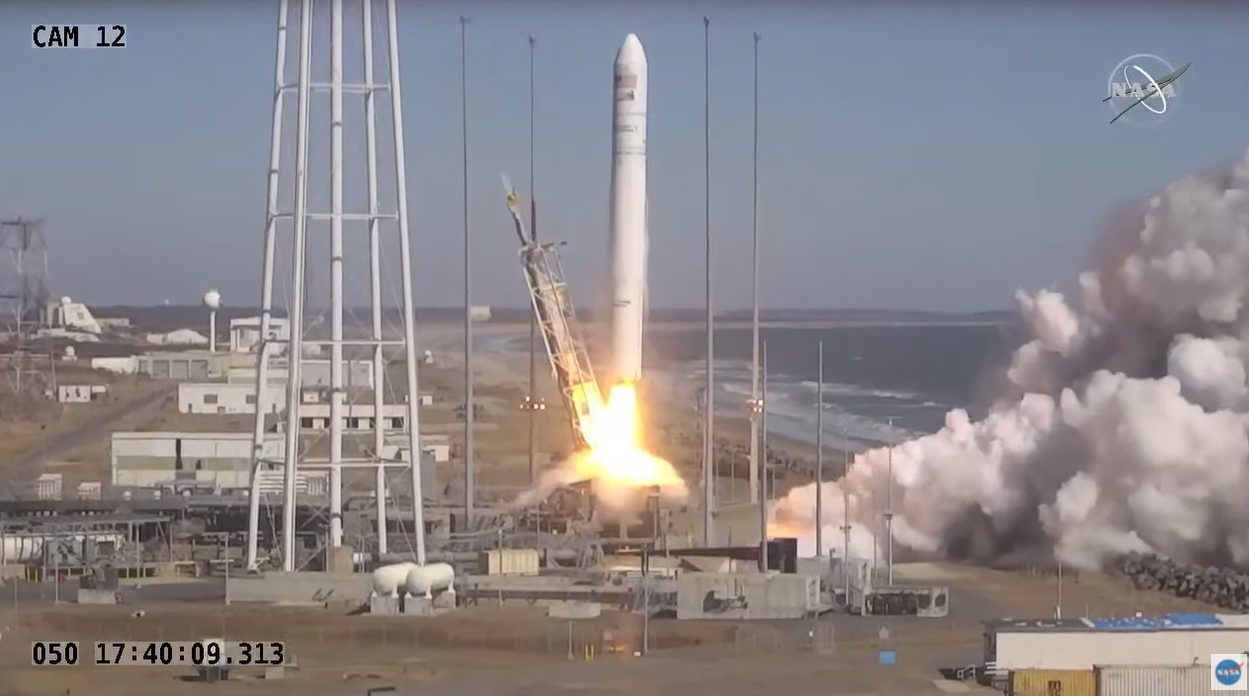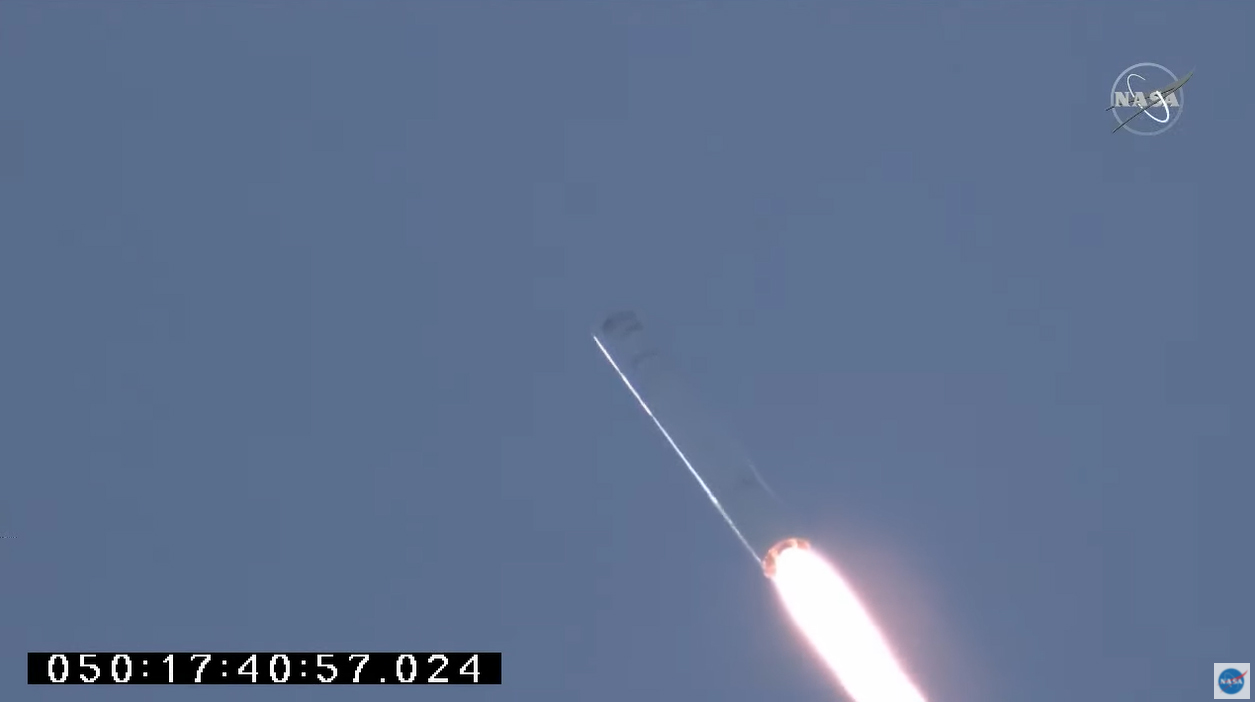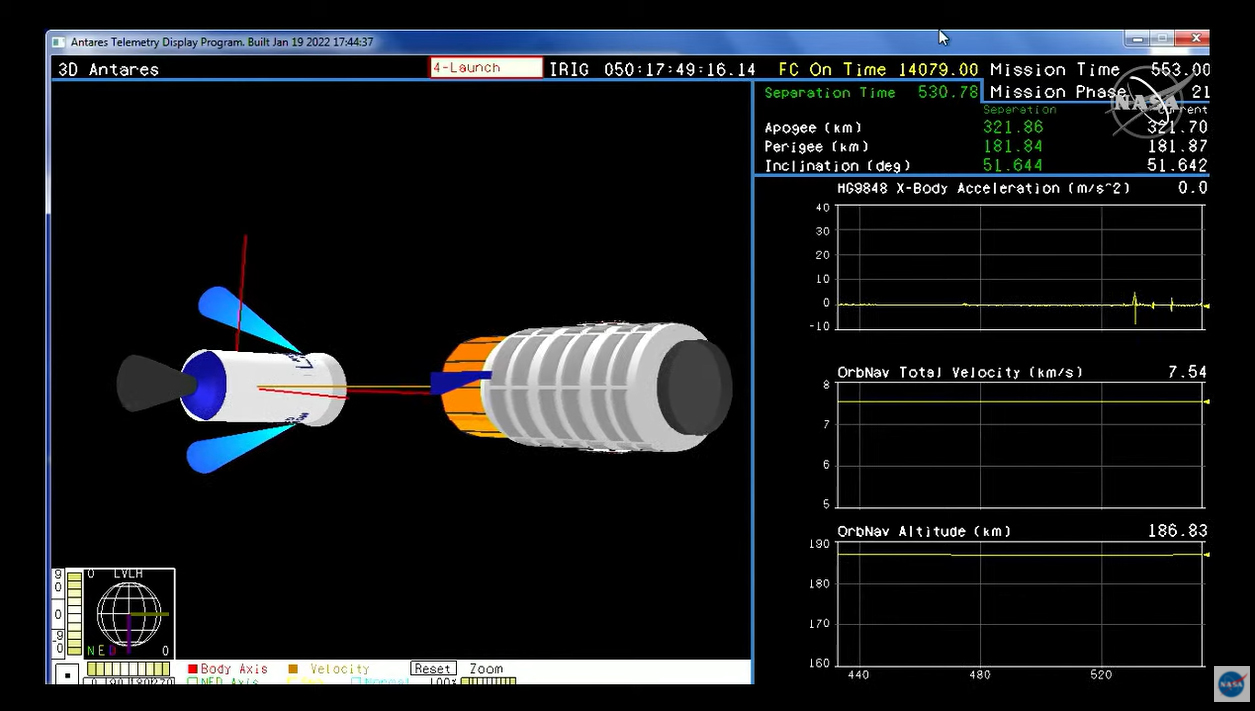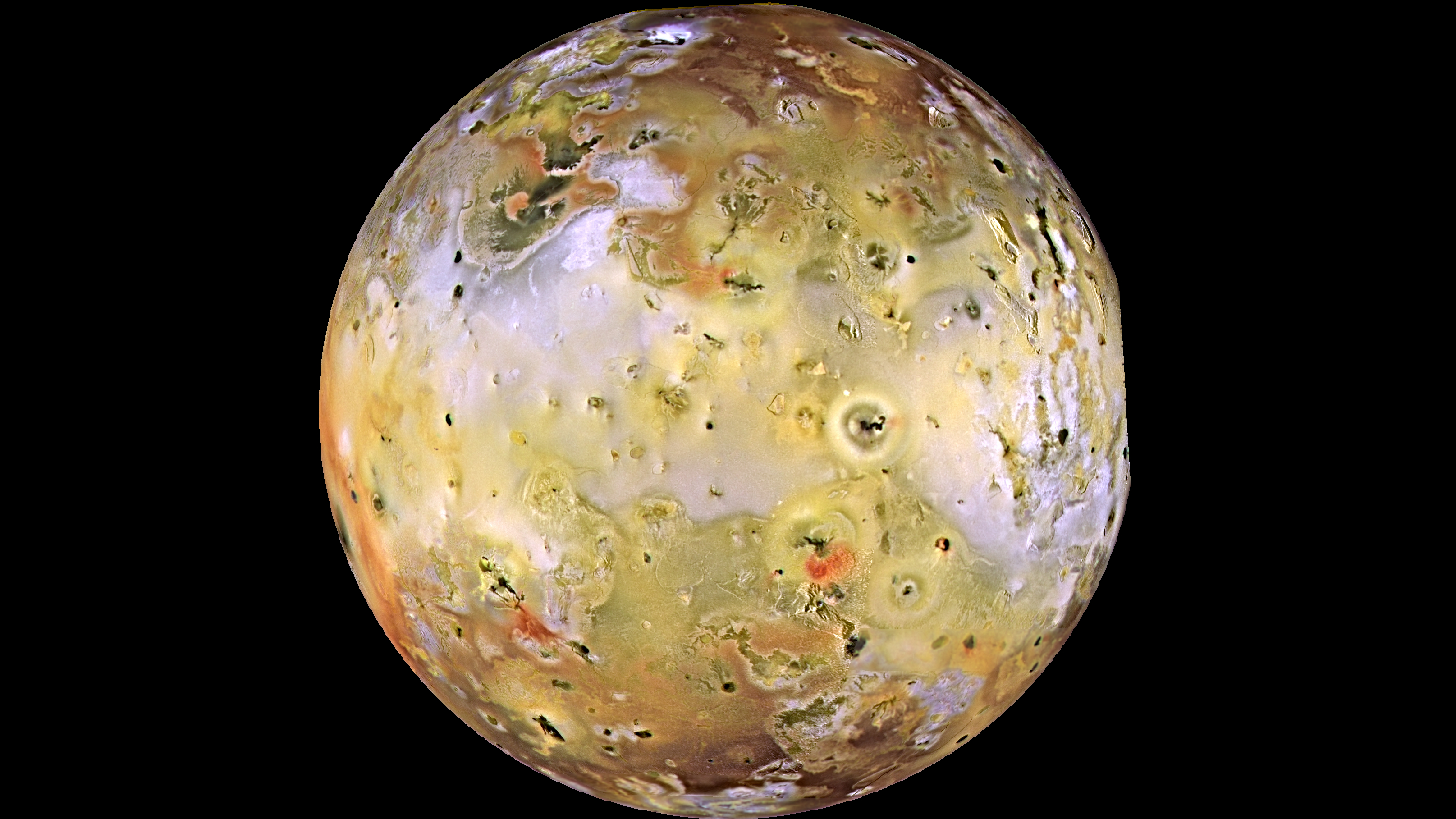Northrop Grumman rocket launches Cygnus cargo ship on 2-day trip to space station
The uncrewed freighter is bringing more than 8,300 pounds of supplies and research gear to the International Space Station.
A private Cygnus freighter launched several tons of research and supplies to the International Space Station (ISS) on Saturday (Feb. 19).
The Northrop Grumman spacecraft launched on time atop an Antares rocket from NASA's Wallops Flight Facility in Virginia at 12:40 p.m. EST (1740 GMT), kicking off a 1.5-day journey to the ISS. Winds were cited as the only potential major obstacle to launch, but the pre-launch poll indicated no issues with weather.
"It was a perfect ride to orbit," a NASA spokesperson said on NASA TV after the launch during live commentary. "Cygnus now well on its way to the International Space Station."




Aside from the expected orbital delivery, Cygnus is scheduled to perform the program's first operational reboost of the ISS. The space station's orbit needs to be changed from time to time as it naturally falls back in Earth's atmosphere.
The procedure is "a critical part of maintenance for the International Space Station," Kristina Halona, Antares systems engineer and program manager, said during a live launch broadcast on NASA Television Saturday. The timing for the maneuver was not discussed during the broadcast.
Video: Watch astronauts capture Cygnus NG-16 in orbit
Assuming the mission goes to plan, Cygnus should arrive at the ISS around 4:35 a.m. EST (0935 GMT) on Monday (Feb. 21), delivering about 8,300 pounds (3,765 kilograms) of supplies. Space.com will carry NASA's coverage of that event, starting at 3 a.m. EST (0800 GMT).
Breaking space news, the latest updates on rocket launches, skywatching events and more!
Expedition 66 NASA astronaut Raja Chari will capture Cygnus with the orbiting lab's robotic Canadarm2, with fellow agency astronaut Kayla Barron acting as backup. Following capture, Mission Control will send commands to Canadarm2 to rotate and install the spacecraft on the station's Unity module on the port facing Earth.
Mission managers said it is possible the crew will start unloading equipment on Monday, although the bulk of the work is scheduled to begin Tuesday (Feb. 22).
As is usual on such supply missions, the astronauts will receive a treat of fresh food amid the thousands of pounds of essential cargo; in this case, the Cygnus contains avocados, tomatoes, grapefruits, pears and blueberries, Joel Montalbano, manager of the International Space Station program at NASA, said during a livestreamed press conference Friday (Feb. 18).
Amid the hardware, Montalbano drew attention to an "ISS power augmentation mod kit" aboard Cygnus that will help to support the installation of two solar arrays later this year, as part of several years of power upgrades to the orbiting complex for expanding science operations. Each ISS Roll-Out Solar Array (iROSA) is delivered via SpaceX Dragon cargo spacecraft.
Aside from the solar arrays, Montelbano added, the Cygnus contains about 2,800 pounds of vehicle-related hardware. Among that hardware, he said, is "some air tanks, some high-pressure nitrogen and oxygen tanks, a number of computer resources, and a little over 100 pounds of spacewalking equipment." The Canadian Space Agency is also launching a new camera lighting assembly for its Canadarm2 to increase illumination during berthings of vehicles like Cygnus, he said.

Saturday's launch marked the beginning of the 17th Cygnus resupply flight, so the mission is known as NG-17. Northrop Grumman's Antares rocket uses two Russian-made RD-181 engines to fly to space, and the company has supplies on hand two fly the next two scheduled missions (NG-18 and NG-19), according to Northrop Grumman.
Kurt Eberly, director of space launch for Northrop Grumman, acknowledged uncertainty with future shipments of Russian hardware. That country has more than 100,000 troops deployed near the Ukraine border and is in discussions with the North Atlantic Treaty Organization (and the United States) concerning that quickly changing situation, according to the New York Times.
"We're obviously monitoring the situation," Eberly said. "Hopefully it can be resolved ... [but] the best mitigation we can have is to be buying ahead. We have all of the hardware we need for for all the missions we have on contract with NASA. That includes NG-17, 18 and 19. All that hardware is here at Wallops ... and so hopefully that will tide us over until until these tensions can subside, and we can be back to normal operating procedure."
Two more NASA-funded cargo resupply missions will follow NG-17 in the spring, according to a NASA press conference on Feb. 11. The agency has not published which spacecraft are expected to go to orbit yet on its forthcoming launches calendar.
NASA has a choice of Cygnus or SpaceX's Dragon spacecraft to conduct robotic resupply missions to the ISS. Dragon can hold refrigerated experiments and bring scientific gear back down to Earth; it survives reentry and can be reused. Cygnus vehicles, by contrast, are disposable; they burn up in Earth's atmosphere after leaving the ISS. NG-17's departure from the orbiting lab is expected sometime in late May, NASA officials said.
There's a third robotic resupply vehicle in operation as well: Russia's Progress freighter. The latest Progress mission arrived at the ISS early Thursday morning (Feb. 17), delivering about 2.8 tons of supplies and hardware.
The Cygnus flying on NG-17 is named after NASA astronaut Piers Sellers, who spent 35 days in space across three space shuttle missions that assisted with the construction of the ISS. Sellers, also a climate scientist and deputy director of Goddard Space Flight Center's Sciences and Exploration Directorate, died in 2016 after a diagnosis of Stage 4 pancreatic cancer.
The S.S. Piers Sellers will have a large haul of science investigations on board, including:
- Colgate Skin Aging experiment, led by Colgate. It "evaluates cellular and molecular changes in engineered human skin cells in microgravity," according to a NASA press release. Changes in such cells have implications for matters such as fighting off infection or regulating body temperature, which are some of the functions of skin.
- MicroQuin 3D Tumor, led by MicroQuin. It "examines the effects of a drug on breast and prostate cancer cells in space," NASA says. Microgravity encourages these cells to grow in three dimensions, which allows investigators a chance to scrutinize the structure.
- OGA H2 Sensor Demo (OGS) , led by NASA's Marshall Space Flight Center. It "tests new sensors for the space station’s oxygen generation system." OGS separates hydrogen from oxygen through electrolysis. While current sensors ensure no hydrogen comes into the cabin, they are sensitive to factors like moisture and require swapping out every 201 days.
- Space As-Lib, an experiment from the Japanese Aerospace Exploration Agency examining "a lithium-ion secondary battery capable of safe, stable operation under extreme temperatures and in a vacuum environment." The battery has flame-retardant materials and does not leak liquid, among other attributes.
- The eXposed Root On-Orbit Test System (XROOTS) investigation, led by Sierra Nevada Corp. This experiment tests plant growth in hydroponic (water-based) and aeroponic (air-based) systems, instead of using soil. If successful, these systems could reduce the mass of plant experiments, researchers say.
- Solid Fuel Ignition and Extinction (SoFIE), a new combustion facility that will be installed in the Combustion Investigation Rack, located on the U.S. Laboratory Module (Destiny) for safe combustion research.
Follow Elizabeth Howell on Twitter @howellspace. Follow us on Twitter @Spacedotcom or Facebook.

Elizabeth Howell (she/her), Ph.D., was a staff writer in the spaceflight channel between 2022 and 2024 specializing in Canadian space news. She was contributing writer for Space.com for 10 years from 2012 to 2024. Elizabeth's reporting includes multiple exclusives with the White House, leading world coverage about a lost-and-found space tomato on the International Space Station, witnessing five human spaceflight launches on two continents, flying parabolic, working inside a spacesuit, and participating in a simulated Mars mission. Her latest book, "Why Am I Taller?" (ECW Press, 2022) is co-written with astronaut Dave Williams.
